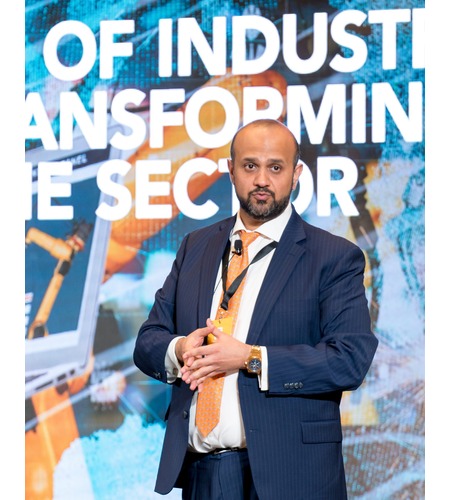M&A powers industrial transformation

Market consolidation and government initiatives encourage sustainable growth
In conversation with Umar Khan, senior vice-president, unit manager – services & manufacturing, Mashreq
How have the UAE’s Operation 300bn and Saudi’s Vision 2030 reshaped the industrial sector?
The introduction of government strategies has transformed the industrial sector by driving economic diversification, reducing reliance on oil and opening new sectors for growth and employment. Moreover, the UAE has seen a surge in Emiratisation across the industrial sector under the Operation 300bn strategy. Today, both countries position themselves as global industrial and economic powerhouses by steadily investing in technology, innovation and talent. Prioritising sustainable outcomes, they align with global trends in renewable energy and Industry 4.0 standards, embedding artificial intelligence across processes. These government-led initiatives also attract foreign and domestic investment, creating favourable business environments. Ultimately these strategies are reshaping the industrial landscape, fostering innovation, sustainability and economic resilience.
As the market evolves, what factors are driving M&A in the industrial sector?
To achieve economies of scale, improve competitive positioning and enhance operational efficiencies, companies look towards M&A for inorganic growth. Smaller firms have seen value in selling businesses and steer focus on other business opportunities due to interest rate pressures. The UAE’s geopolitical stability, strategic location and relaxed foreign ownership laws attract foreign direct investment (FDI), further encouraging acquisitions. Technological advancements like Industry 4.0, along with major infrastructure developments, encourage companies to acquire technological capabilities and expand. The growing presence of private equity and venture capital also fuels M&A, while post-pandemic recovery and the legacy of Expo 2020 continue to boost interest and investment in the UAE as firms capitalise on global exposure and connectivity established during the event. Additionally, better capital helps companies achieve net-zero objectives with access to energy-efficient infrastructure to carbon capture and storage technologies.
How are macroeconomic conditions affecting M&A deal volumes and values?
Macroeconomic conditions have boosted acquisition activity in the UAE, promoting diversification and reducing oil dependency. Successful deals have helped create larger, globally competitive firms, opening new markets through free trade agreements with countries like India and Singapore. These deals also foster job creation, business expansion and technological innovation across industries such as fintech, healthcare and renewable energy. Additionally, M&A stimulates capital markets, boosting IPOs and debt issuances. Overall, M&A enhances the UAE’s global competitiveness, fosters economic growth, and strengthens its financial markets and industrial sectors.
What impact is AI having on M&A?
Initiatives such as the UAE Artificial Intelligence Strategy 2031 are accelerating the integration of advanced technologies across M&A activities. Predictive analytics and real-time market insights are improving valuation accuracy, enabling more precise pricing negotiations. These technologies also help identify synergies between merging companies, enhancing operational efficiency and reducing costs.



